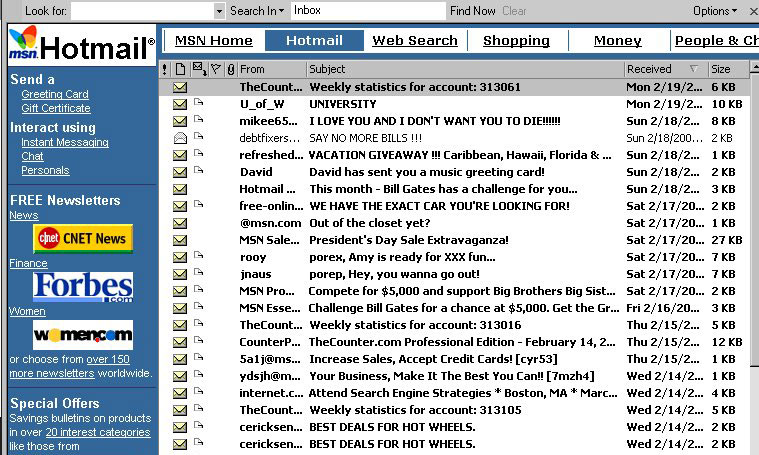
Lunchtime Links: Hotmail, We Bid You Adieu
After 18 years of service, Microsoft nixed Hotmail and migrated all of its users to Outlook.com. A little history about the once-popular, now-defunct email service. Also: Do you find yourself switching between thinking and doing?
When Hotmail launched in 1996, it was the first free email service for consumers. Three-hundred million users and more than 17 years later, Microsoft has shuttered Hotmail and converted its users to Outlook.com.
That, and more, in today’s Lunchtime Links:
In with the new: According to Dick Craddock, group program manager of Outlook.com, Microsoft spent six weeks migrating 150 petabytes of email, calendar, contacts, folders, and personal preferences belonging to its users to Outlook.com. Microsoft gave the mail service a new look and even released two new features: SMTP send, which allows users to send emails from multiple accounts; and better integration with its cloud service SkyDrive. “When we launched the original preview of Outlook.com, we knew that we were committing to building the world’s best email with a brand and product experience that spans from consumers all the way to the largest organizations,” Craddock wrote on the Microsoft Office blog. In case you were wondering how the service came to light, this 2010 Microsoft blog post explains exactly how Hotmail became so popular.
Doing versus thinking: If you find yourself switching from task to task, are you also taking time to strategize? Not likely, says association consultant Steve Drake. Drake says multitasking association functions isn’t a realistic solution because doing so requires different kinds of thinkers. Some of us are hard-wired to be doers; others are more strategic types. Successful organizations need both. “If you are focused mostly on doing and implementing, who in your organization is focused on strategic thinking? And, if you are more comfortable and focused on strategic thinking, who is doing the basic staff work at your association? Who is implementing your ideas? And, if you are trying to do both, how do you ‘compartmentalize’ your thinking from your doing?” Drake asks.
What’s your persona? Does your association have a diverse membership? Haila Yates, communications director for Greenlights for Nonprofit Success, recommends creating customized personas for your target audience. These personas can influence your association’s decision-making process, especially if you involve your staff. Yates offers actual examples from her organization to explain how her staff built and implemented personas used to inform strategy meetings.
What interesting reads have you found today? Let us know in the comments.
An early screenshot of the Microsoft-branded Hotmail. (via Wikipedia)






Comments